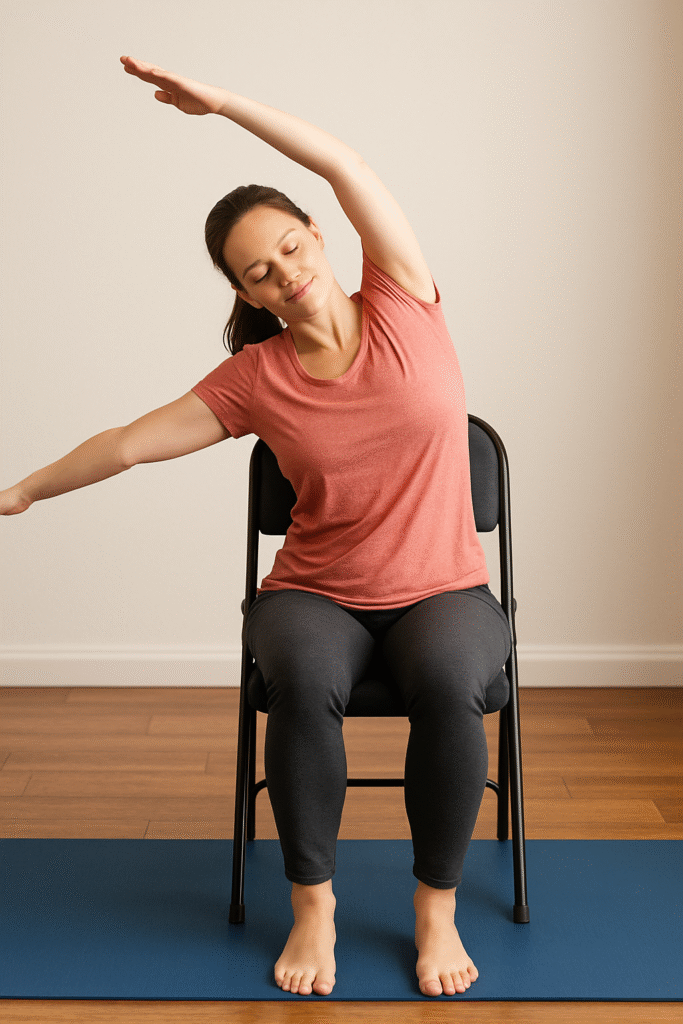Chair yoga exercises offer a practical way for people of all ages and abilities to stay active without the need to get on the floor. These exercises adapt traditional yoga poses to a seated position, making them accessible for those with limited mobility, joint pain, or busy schedules. They help improve flexibility, strength, posture, and relaxation while being gentle and easy to follow.
Many find chair yoga especially beneficial for reducing stress and enhancing mental clarity since it fits easily into daily routines at home, work, or anywhere. With simple modifications, it supports a full-body stretch and can be done in as little as 10 to 20 minutes. This makes chair yoga a convenient option to maintain physical and mental well-being without requiring special equipment or a lot of space.
By incorporating these exercises, individuals can experience increased mobility and comfort over time, regardless of fitness level or physical limitations. Chair yoga offers a slow, mindful approach that promotes both physical health and calmness in a manageable way.
Essential Chair Yoga Exercises
These exercises focus on improving posture, flexibility, and spinal mobility while seated. They are designed to be accessible and safe for most people, including those with limited mobility or beginners.
Seated Mountain Pose
Seated Mountain Pose helps establish proper posture and body awareness. The person sits tall with feet flat on the floor, hips squared, and spine elongated. Shoulders relax down and back, and hands rest gently on the thighs.
Breathing steadily is important. Inhaling deeply through the nose and exhaling fully sets a calm tone. This pose strengthens the core muscles and promotes balance.
Maintaining alignment encourages better posture habits throughout the day. It also provides a grounding, centered starting point for other chair yoga exercises.
Chair Cat-Cow Stretch
The Chair Cat-Cow Stretch mobilizes the spine and releases tension. Sitting toward the edge of the chair, the person places their hands on their knees or thighs.
During the “Cat” phase, they round the spine, pulling the belly button toward the spine and tucking the chin to stretch the back.
In the “Cow” phase, they arch the spine, lifting the chest and gazing upward, allowing the belly to drop forward.
Moving slowly between these two positions with controlled breaths improves spinal flexibility and eases stiffness in the back and neck.
Seated Forward Bend
The Seated Forward Bend targets the lower back, hips, and hamstrings. Starting in a tall seated position, the person exhales and bends forward from the hips, reaching toward the feet while keeping the spine as straight as possible.
Hands can rest on the shins, ankles, or feet based on flexibility. The head and neck relax downward without force.
This pose gently stretches the back and legs, relieving muscle tightness and promoting relaxation. Maintaining smooth breathing prevents strain and helps deepen the stretch gradually.
Chair Spinal Twist
The Chair Spinal Twist improves spinal rotation and digestion. Sitting upright, the person places one hand on the opposite knee and the other hand on the back of the chair for support.
On an exhale, they twist gently toward the back of the chair, keeping the spine long and chest open. The twist should come from the mid-back rather than forcing the neck.
Holding the position for a few breaths increases spinal mobility and relieves tension. Switching sides ensures balanced flexibility on both sides of the body.
Benefits and Best Practices for Chair Yoga
Chair yoga offers targeted physical improvements and practical guidelines that help users safely gain strength, flexibility, and balance. The practice is designed to accommodate different ability levels while focusing on controlled movements and mindful awareness.
Improving Flexibility and Strength
Chair yoga incorporates gentle stretches and movements that increase range of motion in joints and muscles. Regular practice helps reduce stiffness, especially in the hips, knees, and shoulders. Its low-impact nature supports those with arthritis or limited mobility.
Strengthening happens through controlled poses that engage muscles without strain. This includes exercises for core stability, leg muscles, and upper body. Even seated, poses promote muscle activation, supporting functional movement in daily activities.
Consistency is key. A typical session might last 30 to 45 minutes, performed twice weekly. Slow, deliberate motions with deep breathing enhance muscle tone while minimizing injury risk.
Enhancing Balance and Stability
Maintaining balance becomes more accessible with chair yoga, which uses the chair as support to practice stability safely. This is especially beneficial for older adults or those recovering from injury.
Key poses focus on core strength and controlled weight shifts to improve coordination. Balance exercises performed seated or with chair-assisted standing help reduce fall risk, a concern for many seniors.
Practitioners develop better body awareness, which contributes to improved posture and spatial orientation. This can translate into safer movement outside of practice.
Safety Tips for Practicing Chair Yoga
Safety starts with choosing a sturdy, non-rolling chair with a straight back. Ensuring the chair is placed on a stable surface prevents slips or tipping.
Warm-up is essential. Gentle joint rotations and breaths prepare the body. Movements should be slow and within personal comfort limits to avoid strain or discomfort.
Using props like cushions or resistance bands is helpful but should not cause pain. If discomfort arises, stopping or modifying poses is recommended.
Consulting a healthcare provider before starting is advised for individuals with specific health conditions. Proper instruction or guided classes enhance safe execution.



